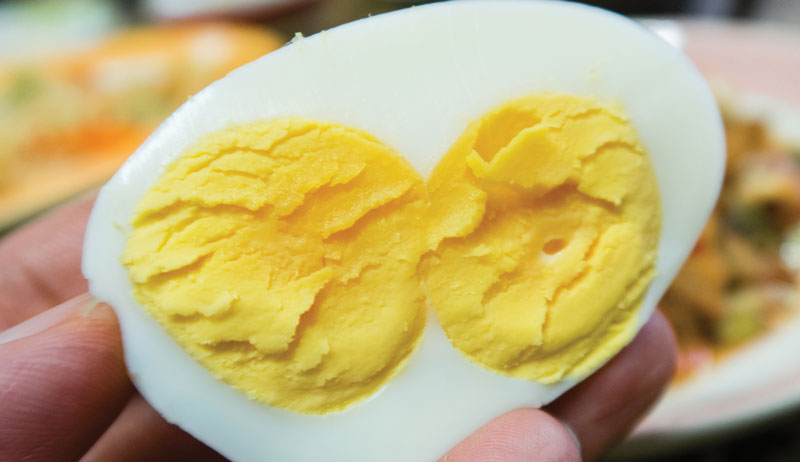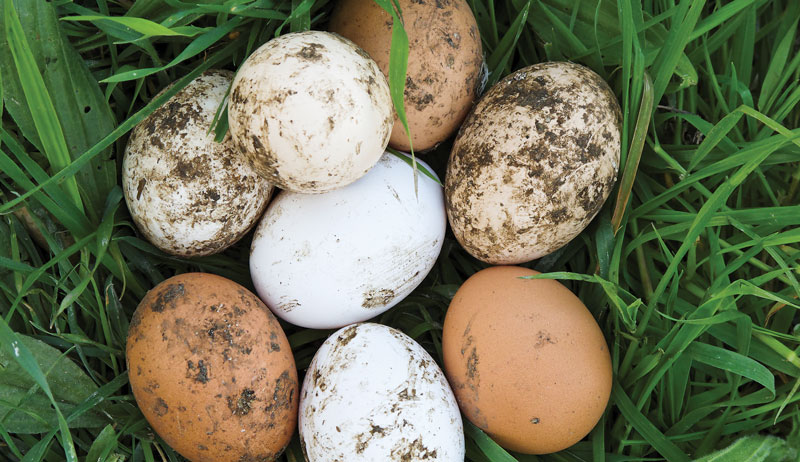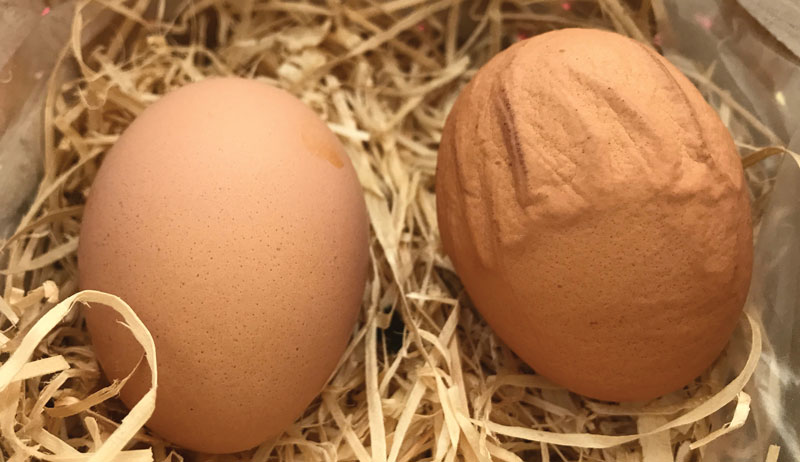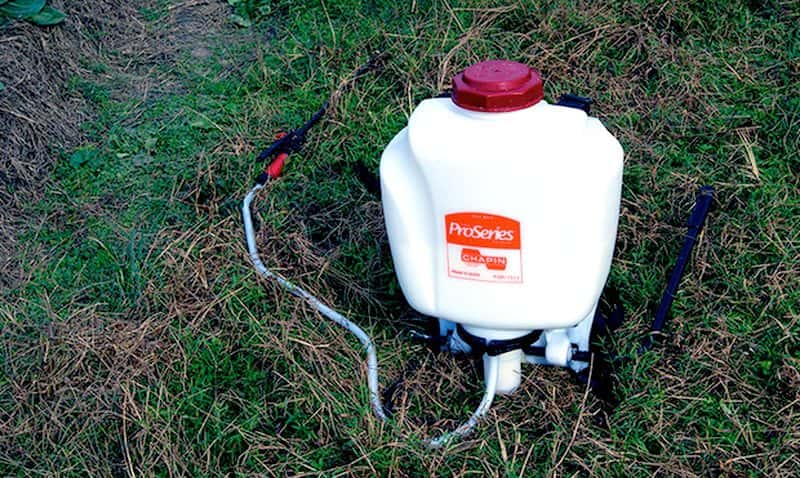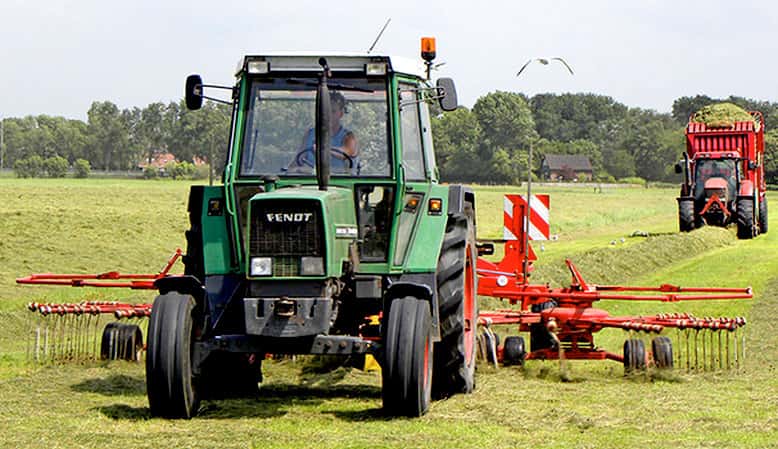Egg yolk peritonitis is among the most common egg-laying disorders in chickens and other backyard poultry. Learning to prevent, diagnose, and treat this health concern in the beginning stages will help your flock beat the odds against this potentially deadly condition.
What is Egg Yolk Peritonitis?
Egg yolk peritonitis is when an egg yolk misses passing into the infundibulum (the funnel part of a hen’s reproductive tract where the egg-laying process begins), dropping into the abdomen.
Once the egg enters the abdomen, the hen’s body has no way of excreting it, causing inflammation within the stomach and intestinal peritoneal cavity. The inflamed area will also begin to accumulate free fluid and blood.
A secondary bacterial infection often follows egg yolk peritonitis, as egg yolks are an excellent growth feed for bacteria.
Causes
Several different health concerns, including salpingitis, ovarian cancer, egg binding, and impacted oviduct, can cause egg yolk peritonitis. Before treatment begins, the infected layer must visit a qualified veterinarian to diagnose the cause, as treatment options may vary with different diagnoses.
Symptoms
Egg yolk peritonitis can be tricky to diagnose from other health conditions. However, if your hen exhibits any of the following symptoms, taking her to the vet is the only way to get a correct diagnosis.
Reduced Activities: Hens suffering from egg yolk peritonitis often show reduced activities and may spend more time in the nesting box. For this reason, many poultry owners mistake egg yolk peritonitis for broodiness.
Egg Mishaps: Frequent laying of soft-shelled eggs, ceasing to lay, or yolk-colored droppings.
Reduced Appetite: Hens suffering from egg yolk peritonitis often have a decreased appetite and, in extreme cases, refuse to eat entirely. A vet visit is necessary if your hen ceases to eat for any reason.
Penguin Stance: Chickens suffering from egg yolk peritonitis often adopt a penguin stance, with their shoulders hunched, heads and necks tucked into the shoulders, and tails drooping toward the ground.
Uneven Weight: If you handle your chickens frequently, you may notice a hen suffering from peritonitis may have uneven weight proportions. The cause of this weight problem is that while the hen is eating less food, causing her to lose weight, her abdomen is filling up with eggs and fluid. Care should be taken when dealing with hens with this condition, as their uneven weight may make them unsteady on their feet.
Big Belly: A big belly is the most apparent symptom of egg yolk peritonitis. Run your hand along your chicken’s body, from the crop to the abdomen. If the belly is extended and feels full of fluid, egg yolk peritonitis is likely the culprit.
Diagnosis:
If you suspect a chicken suffers from this condition, take her to a qualified veterinarian for an exam. The vet will thoroughly examine the chicken to rule out other potential health concerns and diseases and perform some tests.
Complete Blood Count: A vet often suggests doing a complete blood count (CBC) to look for infections or other abnormalities in the hen’s blood.
Radiographs/Ultrasound: Radiographs are usually necessary to determine whether an oviduct tumor is causing the eggs to drop into the abdomen or if a blockage has occurred. Before allowing a vet to perform radiographs or an ultrasound on your hen, ask for an estimated cost, as these options can be costly.
Abdominal Fluid Cytology and Culture: To best determine the cause of the peritonitis, a vet may draw fluid out of the abdomen with a needle. The fluid is sent to a lab for further testing.
Treatment
Treatment for egg yolk peritonitis varies, from a round of antibiotics to costly, life-threatening emergency surgery such as spaying the hen, depending on the diagnosis.
Whether you treat the hen with traditional veterinarian care largely depends on whether it is kept for egg laying or a beloved family pet. However, if treatment isn’t an option, care should be taken to dispatch the hen to avoid suffering with humane euthanasia performed by a qualified veterinarian.
If a reproductive tumor causes peritonitis, a vet will likely suggest humane euthanasia. While this may sound extreme, it is the best way to prevent the hen from needless suffering, as reproductive tumors can wreak havoc on a hen’s body.
Dispatched poultry with this condition should not be consumed as the bacteria in their bodies can make you sick.
Prevention
One of the most common causes of egg yolk peritonitis is ovarian/oviduct tumors. Some of the best ways to prevent hens from developing reproductive tumors and peritonitis include:
- Feed layer ration to ensure laying hens receive adequate amounts of calcium to prevent egg binding
- Feed anti-inflammatory herbs
- Avoid using artificial light to promote laying
- Add flax seeds to your flock’s diet
- Reduce stress in the flock
- Routine checkups to ensure the abdomen isn’t filling with fluid performed by poultry owner
If egg binding is the cause, a veterinarian may prescribe hormone implants. (Bear in mind that due to government regulations, not all veterinarians offer hormone implants as part of the treatment options.) After a hen receives a hormone implant, neither she nor her eggs can be consumed for the rest of her life.
Egg Yolk Peritonitis in Other Poultry
Like chickens, other poultry can develop this condition. Treatment options, diagnosis, symptoms, and preventative care are similar in all poultry species. As with chickens, treatment should begin immediately to help your poultry friend beat this potentially deadly health condition.
Egg yolk peritonitis can be a deadly health condition, but with preventive care and proper treatment from a veterinarian, it may not have to be.
This article was written for Chickens magazine. Click here to subscribe.







